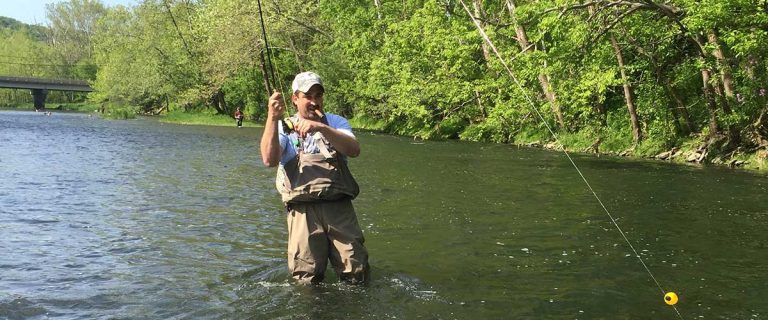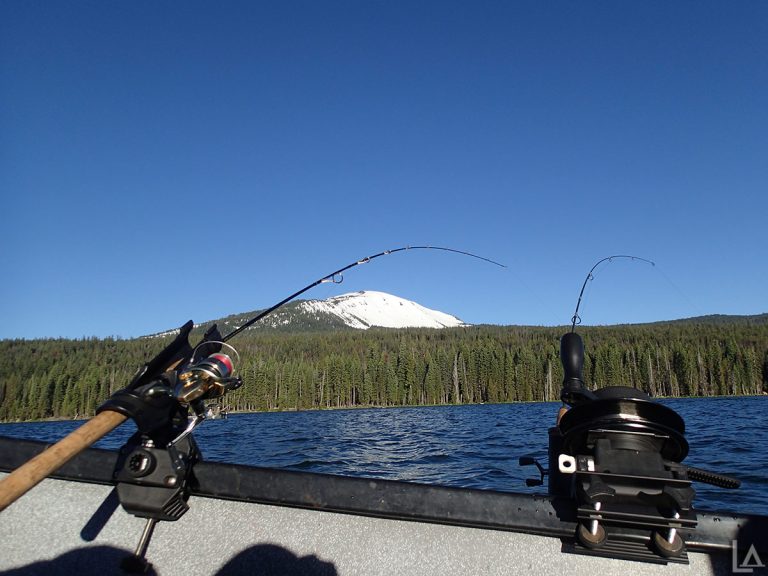For avid anglers considering the substantial upfront investment of a lifetime fishing license, one question looms large: When does this purchase actually pay off financially? The answer involves a careful analysis of break-even points, state-specific pricing structures, and personal factors that determine whether this long-term investment delivers true value.
This comprehensive guide breaks down the financial calculations, state comparisons, and critical variables that influence when—and if—a lifetime fishing license makes economic sense for you or your family members.
Understanding the Break-Even Calculation
The fundamental question most anglers want answered is how many years of fishing it takes to recoup the initial investment in a lifetime license. This break-even point varies dramatically across states, age brackets, and residency status.
Basic ROI Formula:
- Lifetime License Cost ÷ Annual License Cost = Years to Break Even
- Adjusted Formula (with inflation): Lifetime License Cost ÷ (Annual License Cost × [1 + Average Annual Fee Increase])
For example, in Texas, a $1,000 resident lifetime fishing license compared to a $40 annual license has a simple break-even point of 25 years. However, when accounting for the historical 2% annual increase in license fees, the break-even point drops to approximately 22 years¹.
State-by-State Break-Even Analysis
The economics of lifetime licenses vary significantly by state:
| State | Resident Lifetime License Cost | Annual License Cost | Basic Break-Even (Years) | With 2% Inflation Break-Even |
|---|---|---|---|---|
| Texas | $1,000 | $40 | 25.0 | 22.3 |
| Pennsylvania | $460 | $23.97 | 19.2 | 17.5 |
| Florida | $301.50 | $17 | 17.7 | 16.2 |
| Michigan | $440 | $26 | 16.9 | 15.6 |
| California | $871.25 | $52.66 | 16.5 | 15.3 |
| Alabama | $329.55 | $14.55 | 22.6 | 20.2 |
Note: Prices current as of March 2025. Check with your state wildlife agency for the most up-to-date information.
According to the Pennsylvania Fish and Boat Commission, anglers who purchase a lifetime license before age 30 typically achieve a 300-400% return on investment over their fishing lifetime when factoring in inflation and fee increases².
Age Tier Pricing: Maximizing ROI Potential
Many states offer age-based pricing tiers that dramatically affect the ROI calculation. Purchasing a lifetime license for a young child often represents the most advantageous financial decision.
Example from Tennessee:
A Tennessee lifetime fishing license costs $200 for infants under 1 year old, $659 for children ages 3-6, $988 for ages 7-12, $1,976 for ages 13-50, and $1,153 for ages 51-64. For a child under age 1, the license pays for itself in less than 7 years once they reach fishing age³.
Conversely, for adults nearing retirement age, the financial equation often becomes less favorable. A 65-year-old considering a lifetime license in many states might be better served by annual senior discounted licenses or free fishing opportunities available to seniors.
Critical Factors Affecting Lifetime License Value
Several variables dramatically impact the true value proposition of a lifetime fishing license:
Residency Status and Geographic Mobility
Non-resident lifetime licenses typically cost 2-5 times more than resident options, significantly extending the break-even timeline. However, for frequent visitors who fish a particular state regularly, these can still provide substantial savings compared to annual non-resident licenses.
The Florida Fish and Wildlife Conservation Commission notes that non-residents who purchase lifetime licenses are not subject to future residency requirement changes, potentially saving thousands for those who visit Florida waters regularly⁴.
One critical consideration is what happens if you move out of state after purchasing a resident lifetime license:
| State | Policy on Moving After Purchase |
|---|---|
| Texas | License remains valid regardless of future residency |
| California | License remains valid, but must establish non-resident status first |
| Michigan | License remains valid, but special restrictions may apply |
| Alabama | License remains valid with proof of resident status at time of purchase |
| Pennsylvania | License remains valid regardless of future residency |
This information is particularly valuable for anglers who may relocate during their lifetime. Check with your state’s fishing license page for specific requirements.
Inflation and License Fee Increases
Annual fishing license fees typically increase at rates exceeding inflation, enhancing the value proposition of lifetime licenses. Most states have implemented license fee increases every 3-7 years, with average increases of 15-25% per adjustment.
According to a Minnesota Department of Natural Resources analysis, their lifetime license program assumes annual fee increases of approximately 2.5% per year when calculating trust fund payouts⁵. A similar rate applied to other states shows that lifetime licenses generally become more attractive investments during periods of higher inflation or aggressive fee increase schedules.
Advanced Financial Analysis: Beyond Basic Break-Even
For financially-minded anglers, more sophisticated analysis techniques provide deeper insights:
Internal Rate of Return (IRR): A Texas Parks and Wildlife Department study calculated the IRR for lifetime licenses purchased at different ages, finding an average 3.08% annual return for adults using the license for 32+ years—comparable to conservative bond investments⁶.
Opportunity Cost Consideration: The opportunity cost of investing the same amount in the stock market versus a lifetime license factors into comprehensive financial analysis. At an average 7% annual return, investing $1,000 instead of purchasing a lifetime license would yield approximately $7,612 over 30 years.
Case Studies: Real-World ROI Scenarios
Case Study 1: Young Family in Pennsylvania
The Johnson family purchased a Pennsylvania lifetime fishing license for their 2-year-old daughter at $460. With annual youth licenses costing $2.97 (ages 0-15) and adult licenses at $23.97, the family will break even when their daughter is 31 years old. Accounting for projected fee increases, the break-even point drops to age 26, representing a lifetime savings of over $1,500⁷.
Case Study 2: Frequent Non-Resident Angler in Florida
Michael visits Florida annually for fishing trips. At age 40, he purchased a non-resident lifetime saltwater fishing license for $602. With annual non-resident licenses costing $47, his break-even point is 12.8 years. However, Florida has increased non-resident fees by approximately 3% annually over the past decade, potentially moving his break-even point to under 11 years⁸.
Lifetime License Advantages Beyond Financial ROI
While financial ROI drives most lifetime license decisions, several non-monetary benefits should factor into your analysis:
- Conservation funding: Most states deposit lifetime license fees into trust funds that provide perpetual support for wildlife conservation initiatives.
- Administrative convenience: Eliminating annual renewal paperwork and deadlines reduces the risk of fishing with an expired license.
- Gift potential: Lifetime licenses make meaningful multi-generational gifts with both practical and sentimental value.
- Potential for additional privileges: Some states offer lifetime license holders special access opportunities or privileges not available to annual license holders.
According to the Alabama Department of Conservation and Natural Resources, lifetime license holders contribute approximately $7 million annually to conservation efforts through the interest generated by their license fund⁹.
Making Your Decision: Is a Lifetime License Right for You?
Based on comprehensive analysis, lifetime fishing licenses typically make the most financial sense in these scenarios:
- Purchasing for children or young adults with many years of fishing ahead
- Residents committed to remaining in-state or states with generous mobility policies
- Frequent anglers who fish annually without fail
- States with aggressive fee increase histories that accelerate break-even timelines
- Situations involving significant non-resident fishing activity in a specific state
Conversely, lifetime licenses may not be financially advantageous for:
- Seniors or older adults with fewer potential fishing years remaining
- Casual or occasional anglers who might not fish every year
- Anglers planning to relocate to states with restrictive policies on lifetime license portability
- Those with alternative investment opportunities yielding higher potential returns
Interactive Decision Tool
To determine if a lifetime fishing license makes financial sense for your specific situation, consider these key questions:
- What is your current age (or the age of the intended license holder)?
- How many more years do you realistically expect to fish?
- What is the current cost difference between lifetime and annual licenses?
- Does your state offer age tiering for lifetime licenses?
- What is your state’s historical pattern of license fee increases?
- Do you anticipate remaining a resident of your current state?
- Would you fish every year without fail?
For state-specific information to help answer these questions, visit US Fishing Licenses state guides.
Conclusion
The financial wisdom of purchasing a lifetime fishing license varies dramatically based on age, state policies, residency status, and personal fishing habits. The most favorable ROI typically comes from purchasing lifetime licenses for young anglers, with potential returns exceeding 300-400% over a lifetime of fishing.
While the upfront cost can be substantial, the combination of rising annual license fees, elimination of renewal hassles, and contribution to conservation efforts makes lifetime licenses an attractive investment for dedicated anglers. By understanding your state’s specific pricing structure and policies, you can make an informed decision that maximizes both financial benefits and fishing enjoyment for years to come.







